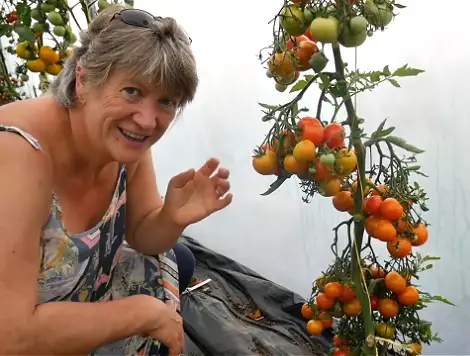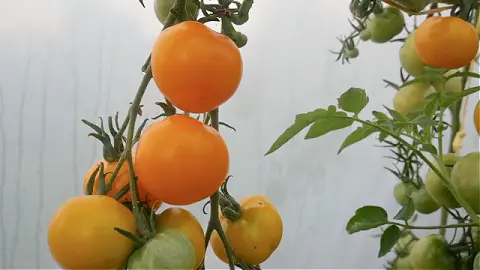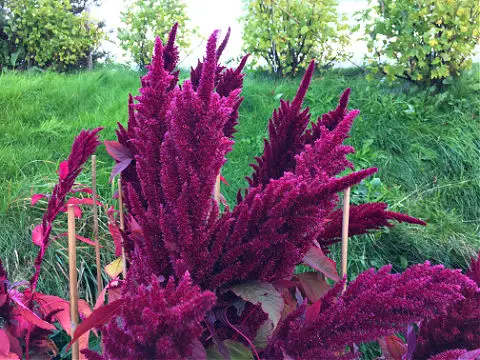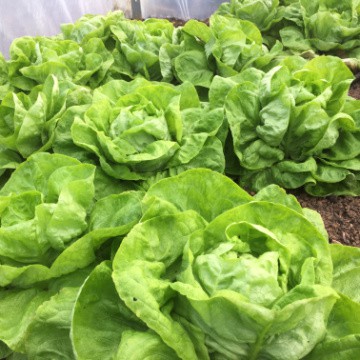Companion Planting with Tomatoes
There are plenty of stories of what should or should not be planted with tomatoes to enhance their growth or protect them from pests. This is called Companion Planting. Some gardeners swear by the benefits of companion planting, while others refute the idea.

Articles on this site may contain affiliate links. As an Amazon Affiliate, we earn from qualifying purchases. Find our full Disclosure Policy here.
Benefits of companion planting with tomatoes
I think companion planting is a good idea because, if nothing else, it creates a polyculture in the area around your tomato plants. Other benefits include
- Weed control
- Enhanced flavor
- Increased harvests
- Pest control
- Light control
- Improved use of resources
- Increased biodiversity
Weed control
By planting around the base of tomatoes, the amount of light that can reach the soil is reduced. Therefore, weeds are less likely to grow because of the lack of available light, water and nutrients.
Enhanced flavor
There is a belief by some gardeners that the taste of tomatoes is enhanced and improved by growing particular plants with the tomatoes.
Increased harvests
Because you are making best use of the available space, the volume of food harvested from that area increases.
Pest control
Some plants will deter pests from other plants, or confuse the pests by their aroma. Other companion plants for tomatoes will lure the pests away from the tomatoes, therefore reducing the risk of attack by those pests.
Light control
Taller growing plants can offer shade for plants that prefer a shadier spot.
Improved use of resources
Resources like water are wasted less. Run off from watering tomato plants can be used by the companion plants.
Biodiversity
By creating a small polyculture, an increased number of insects and other wildlife will be attracted to the area. The differing types of micro-organisms in the soil may increase and nutrient usage may be more balanced.
It is difficult to say, with accuracy, which plants are of the most benefit and to what extent. Increasingly, scientific research suggests that companion planting, with the appropriate plants, is a good idea. As so many gardeners through the ages have used companion planting to enhance the growth of their vegetables, it is certainly worth trying it at home to see which you prefer to grow as companion planting for tomatoes.

Plants to avoid for companion planting with tomatoes
Vegetables and herbs
Dill. Delightful as a fresh, green herb and the seeds are useful in the kitchen too. But do not plant dill close to tomatoes as the mature plants will inhibit their growth. If you grow dill to collect the seeds, make sure you plant them area to your slightly away from tomato plants.
Fennel. Fennel releases a substance from the roots that inhibits the growth of many plants. Generally, it does not make a good companion plant. To avoid stunted growth of tomatoes, do not use fennel as a companion plant. It does, like dill, attract predatory insects, so planting some fennel nearby, but not next to your tomatoes could be advantageous.
Nighshades including potatoes, peppers and aubergine, otherwise known as eggplant. These are in the same family of plants as tomatoes and are susceptible to the same diseases, like blight. Where plants from the same family are grown in the same spot year after year, diseases can build up in the soil leaving your tomatoes more vulnerable. Some gardeners feel that you should leave three years between planting nightshades in the same spot in the garden, greenhouse or polytunnel.
Brassicas. A large family of very useful vegetables to grow, particularly in the cooler climates of the world. However, all of the cabbage family will slow down the growth of tomatoes. So, plant your cabbages, kale, sprouts, collards, cauliflower, swedes (also known as rutabaga), kohlrabi, turnips and broccoli elsewhere in the garden. Used as a lure for tomato pests, brassicas can be useful as sacrificial plants.
Trees and other plants
Walnuts. Walnuts produce an allelopathic chemical which inhibits the growth of plants nearby. The chemical juglone will impact negatively on all of the nightshade family. Do not grow tomatoes under a walnut tree.
Plants susceptible to the same pests. Some plants like corn are likely to be attacked by the same pests that will attack tomatoes. Therefore, it makes good housekeeping sense not to grow them close by to each other. A prime example of this is corn. In countries where corn earworm is a nuisance, keeping your tomatoes well away from corn is good practice.

So now we know which plants not to use as companion planting for tomatoes, let’s look at those that make good growing companions.
Flowers as companion planting with tomatoes

Calendula
Also known as pot marigold. Repel pests and encourage predator insects. Plus the petals are edible and add a lovely splash of color to your salads.
Marigolds
French and African marigolds can repel pests. Tomatoes are moderately susceptible to root-knot nematodes, therefore planting marigolds around the tomatoes may help to reduce their numbers.
Nasturtium
These useful plants with edible leaves, flowers and seeds attract aphids away from the tomato plants.
Amaranth
Grown nearby to tomatoes will attract natural predator insects. They are attractive plants that can add a splash of color to the garden while repelling tomato pests. In itself, amaranth is a useful crop for its edible seeds.

Herbs to grow as companion planting with tomatoes
Basil
The aroma of basic repels insects. It improves growth and enhance the flavor of tomatoes. Additionally, it repels mosquitos and many types of flies.
Mint, lemon balm and bee balm

Bee balm is also known as bergamot or monarda. Useful plants with attractive flowers and scented leaves. Highly scented leaves help to repel insects. Use the leaves in infusions or to make potpourri. A word of warning – these plants spread rapidly and can become invasive. It may be worth growing them in pots close to the tomatoes rather than in the ground, also move them regularly to ensure the roots to not spread into the soil.
Borage
Both white and blue versions of borage are useful companion plants. Said to improve growth and enhance the flavor of tomatoes. Borage repels tomato hornworms. Hornworms are unwelcome because if left unchecked, tomato hornworms can decimate tomato plants in a short space of time.
Chives and parsley
Both said to improve health of tomato plants and to enhance the flavor of the fruit. Use chive flowers to make Chive Vinegar.
Vegetables to grow as companion planting with tomatoes
Garlic
A highly pungent plant that repels red spider mite. Use garlic to make a natural spray for use in the garden and as a mosquito repellent.
Carrots
Carrots make good companions for planting with tomatoes. The roots help to open up the soil and the aroma of the leaves and roots help to confuse pests.
Lettuce
Lettuces and other salad leaves benefit from the shade provided by tomato plants, while creating shade over the soil to reduce evaporation and limit weed growth.

Further reading about companion planting with tomatoes (and many other vegetables)
Plant Partners | Science-Based Companion Planting Strategies for the Vegetable Garden by Jessica Walliser
- Gardening Podcast – Morag Gamble - April 5, 2024
- Gardening Podcast Joe’s Garden - March 22, 2024
- Gardening podcast Mike Palmer - March 15, 2024

I honestly did not know that about Walnuts that’s really fascinating. Thankyou 🙂